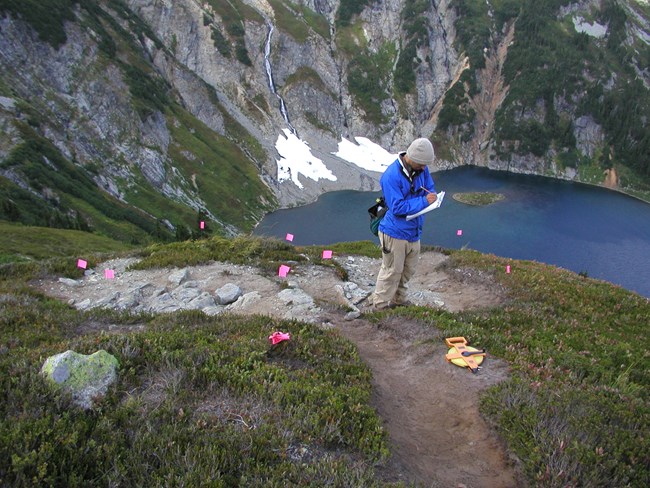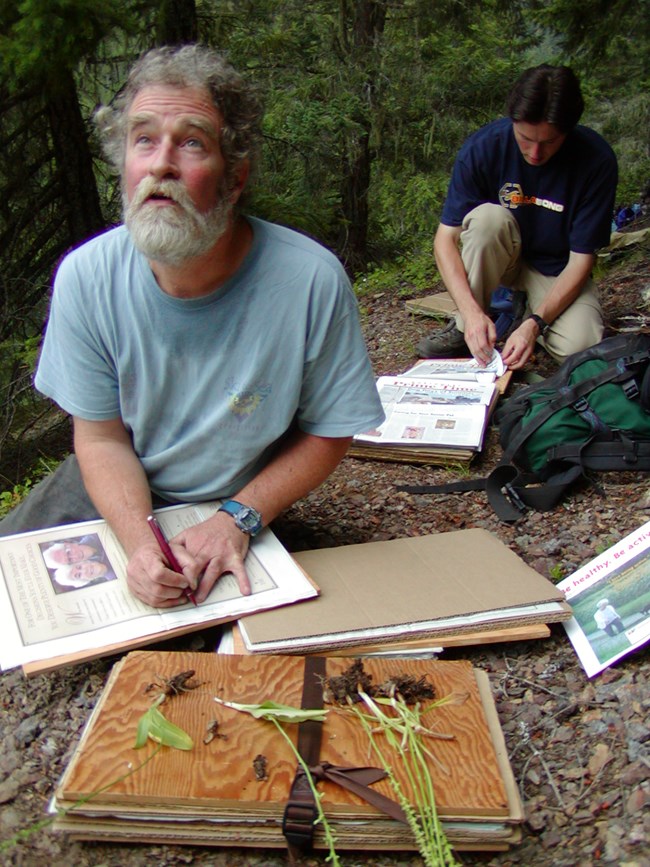
NOCA, NPS From the tiniest butterfly to the largest wildfire, clues about the inhabitants and cycles of the North Cascades can only be teased out through years of research, dedication of staff and partners, and a desire to know how it all fits into the big picture. Signals for climate change, for example, are reflected in everything from melting glaciers to the breeding success rates of butterfly populations. In recent years, inventory and monitoring of the park's physical and biological resources has been the focus of a great deal of study. Without a baseline of understanding, how can we discover what changes are taking place and what it all means? Exploratory archeology, ethnographic, and historic research also provide a deeper understanding of the rich cultural history in the North Cascades and add to data for comparative research. How do we preserve and protect this amazing patch of wilderness for future generations? How do we make decisions to effectively manage such a dynamic landscape and broad set of resources? How can we protect our visitors and our resources without interfering with natural patterns? A cadre of scientists and specialists approach these questions by collecting data on landforms, soils, water, ice, air, sound, plants, fish, wildlife and historic and archeological resources. They study glacial retreat and riverine processes, identify rare and threatened habitat, plants and animals. They measure changes in forest composition and fire intervals, behavior patterns of wildlife and people, and find signals for pollution in water and air. Even the soundtrack of wilderness (the natural soundscape) is the subject of study. Resource Briefs provide an overview of current and ongoing research in the park. We invite you to explore the North Cascades with a scientist's eye. 
NOCA, NPS Current Resource Briefs |
Last updated: January 31, 2018
